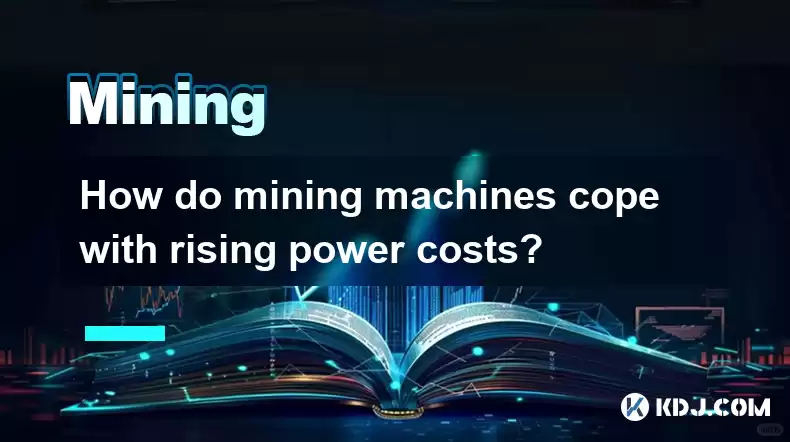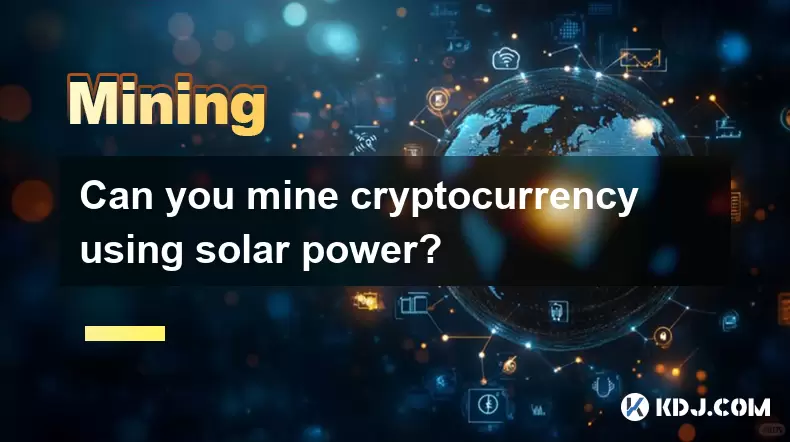-
 Bitcoin
Bitcoin $116700
0.24% -
 Ethereum
Ethereum $3973
4.34% -
 XRP
XRP $3.283
7.68% -
 Tether USDt
Tether USDt $1.000
0.01% -
 BNB
BNB $789.8
2.27% -
 Solana
Solana $176.2
3.31% -
 USDC
USDC $0.9999
0.00% -
 Dogecoin
Dogecoin $0.2238
5.14% -
 TRON
TRON $0.3389
-0.51% -
 Cardano
Cardano $0.7907
4.03% -
 Stellar
Stellar $0.4527
10.02% -
 Hyperliquid
Hyperliquid $41.07
4.27% -
 Sui
Sui $3.794
1.77% -
 Chainlink
Chainlink $19.49
10.40% -
 Bitcoin Cash
Bitcoin Cash $580.9
0.74% -
 Hedera
Hedera $0.2617
4.32% -
 Avalanche
Avalanche $23.41
3.67% -
 Ethena USDe
Ethena USDe $1.001
-0.03% -
 Litecoin
Litecoin $122.4
1.38% -
 Toncoin
Toncoin $3.364
1.49% -
 UNUS SED LEO
UNUS SED LEO $8.988
0.37% -
 Shiba Inu
Shiba Inu $0.00001295
2.82% -
 Uniswap
Uniswap $10.62
5.75% -
 Polkadot
Polkadot $3.922
4.46% -
 Dai
Dai $1.000
0.01% -
 Bitget Token
Bitget Token $4.494
2.15% -
 Monero
Monero $268.0
-1.30% -
 Cronos
Cronos $0.1523
3.68% -
 Pepe
Pepe $0.00001127
4.43% -
 Aave
Aave $285.4
4.85%
How do mining machines cope with rising power costs?
Rising electricity costs severely challenge cryptocurrency mining profitability, forcing miners to relocate, upgrade hardware, utilize renewables, and adapt to market volatility to remain viable.
Mar 04, 2025 at 06:19 am

Key Points:
- Rising electricity prices significantly impact cryptocurrency mining profitability.
- Miners employ various strategies to mitigate these costs, including relocation, energy efficiency upgrades, and alternative energy sources.
- The long-term viability of mining depends on adapting to fluctuating energy costs and technological advancements.
- The cryptocurrency market's volatility also influences miners' responses to rising power costs.
How Do Mining Machines Cope With Rising Power Costs?
The cryptocurrency mining industry is energy-intensive. The profitability of mining operations is directly tied to the price of the cryptocurrency being mined and the cost of electricity. As electricity prices rise, miners face a significant challenge to maintain profitability. This necessitates a multifaceted approach to cost management.
One of the most common strategies is relocation. Miners are constantly seeking regions with lower electricity costs, often moving operations to areas with abundant hydroelectric power or other inexpensive energy sources. This involves significant logistical challenges, including transporting heavy mining equipment and establishing new infrastructure. However, the potential cost savings often justify the effort.
Another key strategy involves upgrading to more energy-efficient mining hardware. Advances in ASIC (Application-Specific Integrated Circuit) technology constantly improve the hash rate per watt, meaning more cryptocurrency can be mined with less energy. While the initial investment in new hardware can be substantial, the long-term reduction in energy costs can lead to significant returns.
Miners are also exploring alternative energy sources to reduce their reliance on traditional power grids. This includes utilizing renewable energy sources like solar and wind power. While the initial setup costs for renewable energy systems can be high, the long-term benefits of reduced electricity bills and a smaller carbon footprint are increasingly attractive. The integration of these sources can, however, be complex and requires specialized expertise.
Beyond hardware and location, miners employ sophisticated software and operational strategies to optimize energy consumption. This includes techniques to manage the cooling systems of mining rigs, ensuring optimal performance while minimizing energy waste. Careful monitoring and analysis of energy usage data are crucial for identifying areas for improvement and optimizing operational efficiency.
The volatility of the cryptocurrency market further complicates the issue. Fluctuations in cryptocurrency prices directly impact the profitability of mining. When prices are high, miners can absorb higher energy costs more easily. However, during periods of low cryptocurrency prices, even small increases in electricity costs can push mining operations into unprofitability. This necessitates flexible strategies that allow miners to adjust their operations based on market conditions.
Common Questions and Answers:
Q: How do rising power costs affect the profitability of cryptocurrency mining?
A: Rising power costs directly reduce the profitability of cryptocurrency mining. The cost of electricity is a major operational expense, and any increase directly eats into the profit margin. This can force miners to reduce operations or even shut down completely if costs become unsustainable.
Q: What are some long-term solutions for miners dealing with increasing electricity prices?
A: Long-term solutions include investing in energy-efficient hardware, exploring alternative energy sources (solar, wind, hydro), and strategically relocating mining operations to regions with lower energy costs. These solutions require significant upfront investment but offer long-term cost savings and improved sustainability.
Q: Can miners use renewable energy to offset rising power costs?
A: Yes, increasingly, miners are turning to renewable energy sources like solar and wind power. While the initial investment can be high, the long-term cost savings and environmental benefits are significant. This also helps improve the industry's environmental image.
Q: How do cryptocurrency price fluctuations impact the ability of miners to cope with rising electricity costs?
A: Cryptocurrency price volatility significantly impacts miners' ability to cope with rising electricity costs. High cryptocurrency prices can offset higher electricity costs, maintaining profitability. Conversely, low prices can render mining unprofitable, even with low electricity costs, forcing miners to adjust operations or shut down.
Q: What are some examples of regions that are attractive for cryptocurrency mining due to low electricity costs?
A: Regions with abundant hydroelectric power, geothermal energy, or other inexpensive energy sources are attractive for cryptocurrency mining. Specific locations vary depending on the current market conditions and regulatory frameworks. Some examples (though subject to change) include parts of Kazakhstan, Iceland, and some areas in North America.
Q: Are there any government regulations affecting miners' ability to manage rising electricity costs?
A: Yes, government regulations regarding energy consumption, taxation, and environmental impact can significantly affect miners' ability to manage rising electricity costs. Some governments might offer incentives for renewable energy adoption, while others may impose stricter regulations on energy usage, impacting operational costs.
Q: What role does technological innovation play in helping miners cope with rising energy costs?
A: Technological innovation plays a crucial role. The development of more energy-efficient mining hardware (ASICs) directly addresses the energy consumption challenge. Advancements in cooling technologies and software optimization also help minimize energy waste and improve overall efficiency.
Q: What is the future outlook for cryptocurrency mining in the face of continuously rising energy costs?
A: The future of cryptocurrency mining hinges on the ability of miners to adapt to fluctuating energy costs and technological advancements. Those who embrace energy-efficient hardware, renewable energy sources, and strategic location planning will likely be better positioned for long-term success. However, the inherent volatility of the cryptocurrency market remains a significant factor.
Disclaimer:info@kdj.com
The information provided is not trading advice. kdj.com does not assume any responsibility for any investments made based on the information provided in this article. Cryptocurrencies are highly volatile and it is highly recommended that you invest with caution after thorough research!
If you believe that the content used on this website infringes your copyright, please contact us immediately (info@kdj.com) and we will delete it promptly.
- Bitcoin, Litecoin, and Avalanche: Decoding the Crypto Buzz in the Big Apple
- 2025-08-09 00:30:12
- Pengu Takes Flight: Can This Solana Meme Coin Conquer the Top 3?
- 2025-08-09 00:50:13
- Coinbase's Big Bet: DEX Trading and the Everything App Vision
- 2025-08-09 01:30:12
- Ethereum and Shiba Inu: Navigating the Bull Move
- 2025-08-09 00:35:12
- Dogecoin, AI Coins, and CMC Listings: What's Hot and What's Not
- 2025-08-09 01:35:51
- Navigating the Crypto Market in 2025: Smart Decisions for Meme Coin Investing
- 2025-08-09 00:55:55
Related knowledge

What is "proof-of-work" and how does it relate to mining?
Aug 07,2025 at 02:03pm
Understanding the Concept of Proof-of-WorkProof-of-work (PoW) is a consensus mechanism used in blockchain networks to validate transactions and secure...

What are the differences between mining on Windows vs. Linux?
Aug 06,2025 at 11:29pm
Overview of Cryptocurrency Mining PlatformsCryptocurrency mining involves using computational power to solve complex cryptographic puzzles and validat...

How to use an old computer for cryptocurrency mining?
Aug 07,2025 at 12:42pm
Understanding the Feasibility of Using an Old Computer for MiningUsing an old computer for cryptocurrency mining may seem outdated, but it is still te...

Can you mine cryptocurrency using solar power?
Aug 07,2025 at 12:00am
Understanding the Basics of Cryptocurrency MiningCryptocurrency mining involves validating transactions on a blockchain network by solving complex cry...

How to build a mining rig inside a PC case?
Aug 06,2025 at 11:01pm
Understanding the Basics of a Mining Rig in a PC CaseBuilding a mining rig inside a PC case involves transforming a standard computer chassis into a d...

What are the best cryptocurrencies to mine with an ASIC?
Aug 08,2025 at 01:22am
Understanding ASIC Mining and Its Role in CryptocurrencyASIC stands for Application-Specific Integrated Circuit, a specialized hardware designed to pe...

What is "proof-of-work" and how does it relate to mining?
Aug 07,2025 at 02:03pm
Understanding the Concept of Proof-of-WorkProof-of-work (PoW) is a consensus mechanism used in blockchain networks to validate transactions and secure...

What are the differences between mining on Windows vs. Linux?
Aug 06,2025 at 11:29pm
Overview of Cryptocurrency Mining PlatformsCryptocurrency mining involves using computational power to solve complex cryptographic puzzles and validat...

How to use an old computer for cryptocurrency mining?
Aug 07,2025 at 12:42pm
Understanding the Feasibility of Using an Old Computer for MiningUsing an old computer for cryptocurrency mining may seem outdated, but it is still te...

Can you mine cryptocurrency using solar power?
Aug 07,2025 at 12:00am
Understanding the Basics of Cryptocurrency MiningCryptocurrency mining involves validating transactions on a blockchain network by solving complex cry...

How to build a mining rig inside a PC case?
Aug 06,2025 at 11:01pm
Understanding the Basics of a Mining Rig in a PC CaseBuilding a mining rig inside a PC case involves transforming a standard computer chassis into a d...

What are the best cryptocurrencies to mine with an ASIC?
Aug 08,2025 at 01:22am
Understanding ASIC Mining and Its Role in CryptocurrencyASIC stands for Application-Specific Integrated Circuit, a specialized hardware designed to pe...
See all articles

























































































